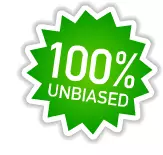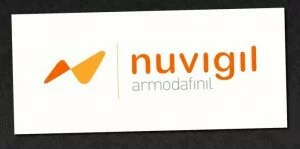
The other day, I came across a wonderful op-ed piece in the Mountain Mail newspaper of Socorro, New Mexico, by a man named Rick Coddington. The article is titled, “Paid-Off Politicians Set To Stick It To Us Again.”
Here are some salient excerpts:
If you caught last week’s column, you know I was traumatized by watching the movie “Sicko†by Michael Moore. It was traumatic because it rocked the foundations of my core beliefs that “socialized medicine†ala Canada and England were the worst things in the world.
I had known about the movie for a long time and would have never watched it because, after all, it was made by Moore, who I considered to be lower than pond scum. Still, rather than face the possibility of being stupid about something, I actually coughed up three bucks and endured the irritating and boring style of Moore and came away “with a different point of view†(as Johnny Cash once sang).
Now I am looking at the possibility that I had fallen hook, line and sinker for a load of lies from my peeps in the conservative movement. To try to decide where the truth lies, I started looking up on the Internet what Canadians say about their supposedly terrible health-care system. Another eye opener –- mostly they love it. That’s not because they are idiots, it is because they evidently really do get much better care than their stupid neighbors to the south…
Everything bad we have been told about “socialized medicine†is covered in the movie. Examples: long waits for service – lies; crummy, underpaid doctors – lies; unavailability of quality drugs – lies; hidden costs – lies; unaffordable, nation-bankrupting costs – lies.
Speaking of costs … if you read my column much, you know I buy drugs from Canada for pennies on the dollar. Even with prescription drug coverage, I can buy –- outright –- drugs from Canada for less than the co-pay costs to get them here!
What does that tell you about the cost of prescriptions? It tells me the drugs actually cost less than the insurance co-pays! If you look at the “list price†of the drugs, you can see (in some cases) the profit is 300 to 400 percent!…
The only difference in the drugs is the profit. The Canadian pharmacy from which I have been buying for years is obviously making money. In contrast to that, if you come down to the good-old U.S., not only are we paying three or four times what the drugs are worth, we are being taxed into oblivion to “bail out†the poor corporations that would just go broke if we tax-saps weren’t shoveling money to them.
What is all this really about? Profits and greed. Outrageous, mind-boggling greed. It’s about CEOs who pay themselves hundreds of millions of dollars to … what -– lose money? They aren’t losing anything personally! That handful of insiders is getting obscenely rich when the rest of us are suffering loss.
They are able to do this with one simple talent. They bribe politicians.
Can I get an “amen”?
 Too many Americans today are basing their opinions on prescription drugs solely on advertising by drugmakers. You should never get all your information from pharmaceutical commercials, Web sites, or drug labels.
Too many Americans today are basing their opinions on prescription drugs solely on advertising by drugmakers. You should never get all your information from pharmaceutical commercials, Web sites, or drug labels.
Why, you might ask? Aren’t drugmakers required by the FDA to tell the truth about their medications?
The answer is, yes and no. Drugmakers are required to tell you about the potential side effects and drug interactions associated with their medications. But the FDA recently warned drugmakers that they are not emphasizing these enough in their ads.
An even more critical omission from drug ads is that they don’t tell you that there are often less expensive generic drugs that are just as effective.
So for unbiased information on drugs or treatments you are interested in learning more about, here are four independent sources that have no ties to, and accept no advertising from, pharmaceutical companies:
1. Consumer Reports Health. Consumer Reports is perhaps the single best source for unbiased drug information, because it has never accepted advertising and is operated by the nonprofit Consumers Union. To access Consumer Reports information, you do have to pay a small subscription fee (less than $20 per year), but it is well worth the price.
2. RxFacts.org. RxFacts.org, the Independent Drug Information Service (iDiS), provides doctors and patients with an evidence-based, non-commercial source of the latest findings about prescription drugs. The Independent Drug Information Service is sponsored by the Pennsylvania Department of Aging, and its clinical content is created by an independent group of physicians and researchers on the faculty of Harvard Medical School. The only downside to this resource is that only a limited number of drugs are currently overviewed on the site.
3. Wikipedia. The mainstream media has done a disservice to Wikipedia by focusing on errors in its entries. Wikipedia is the seventh most visited site on the Web for good reason. Independent surveys have shown that, on average, Wikipedia is similar in accuracy to other encyclopedias. And as an ad-free resource that is not influenced by the pharmaceutical industry, it has great value as a starting point for your research. If you are unsure about any of the information you see in a Wikipedia entry, click on the footnotes in that entry that are required to document facts — which will generally send you to the original source material.
4. eDrugSearch.com’s Online Pharmacy Dictionary. As a free service to members, eDrugSearch.com provides an online pharmacy dictionary of more than 200 commonly prescribed drugs. When you click on an individual drug name, you’ll see news updates on the drug from the Associated Press and other sources, as well as drug information from the FDA. Members of the eDrugSearch.com Community can also view member drug reviews and ratings for more than 100 medications.
 You are probably aware by now of Medicare Part D, which provides a prescription drug benefit to seniors. But did you know that you also may be able to qualify for extra help from Social Security?
You are probably aware by now of Medicare Part D, which provides a prescription drug benefit to seniors. But did you know that you also may be able to qualify for extra help from Social Security?
If you are covered by Medicare but have limited income and resources, Social Security may step up to pay part of your monthly premiums, annual deductibles and prescription co-payments. The extra help is worth an average of $3,900 per year.
You can qualify for extra help if you have income limited to $16,245 for an individual or $21, 855 for a married couple living together.
Even if your annual income is higher, however, you still may be able to get some help depending on your specific circumstances. These include:
- Supporting other family members who live with you;
- Having earnings from work;
- Living in Alaska or Hawaii; and/or
- Having resources limited to $12,510 for an individual or $25,010 for a married couple living together. Resources include such things as bank accounts, stocks and bonds.
Social Security has an online application for those interested. You can also call Social Security at 1-800-772-1213 and ask for the Application for Help with Medicare Prescription Drug Plan Costs, or go to the nearest Social Security office.
To learn more about the Medicare prescription drug plans and special enrollment periods, visit www.medicare.gov or call 1-800-MEDICARE.

In March, bills to finally legalize the purchase of Canadian drugs by U.S. citizens were introduced in both houses of Congress. With a solidly Democratic Congress, the bills seemed to be a legislative slam dunk.
But with politicians kicking around big-picture healthcare issues, smaller pieces of legislation like this one (as well as the similarly worthy Healthy Workforce Act) have been put on the back burner.
Now, thanks to some clever maneuvering by longtime Canadian pharmacy advocates in the Senate, including Byron Dorgan and John McCain (pictured above), Canadian drug reimportation is back on the forefront of the legislative agenda.
Last week, Dorgan (D-ND) proposed the “Pharmaceutical Market Access and Drug Safety Act of 2009†to be introduced as an amendment to an anti-smoking bill that is expected to pass Congress. McCain backed Dorgan by insisting on a vote on the amendment.
Said McCain on the Senate floor:
This issue has been around for a long time … We should address it. It is important to the American people. It really does have a lot to do with the [Food and Drug Administration] — with the pharmaceuticals in this country and availability.
At least one observer, Cole Werble at the IN VIVO Blog, thinks the chances for getting drug reimportation passed may be improving.
The environment around the reimportation debate is changing also. When the proposal first came up, opponents were able to raise the convincing threat of unsafe or poorly manufactured products from outside the US slipping into the domestic drug supply if reimportation were passed.
However, with many manufacturers outsourcing production of active ingredients to a wide variety of low-cost manufacturing locales, they are effectively eroding their own defense-of-quality argument. Domestic suppliers (brand and generic) have had enough well-publicized problems assuring the quality of their products with components from overseas to create a more favorable environment for reimportation.
Mark my words here — if Dorgan and friends can get Congress to vote on Canadian pharmacies, they will vote for them, because that is what (according to the most recent polling) 70 percent of the American people want.

Street drug dealers have used the same formula for years to push their product. They meet and sometimes befriend their target prospects. They offer them drugs for free or at a low price. They wait for their trap to spring — for the target to get hooked on the stuff. The end result is the perfect customer — one who will pay anything, or do anything, for their next hit.
Of course, this kind of marketing strategy isn’t high-toned enough to be covered in the Wall Street Journal — unless, that is, you’re Big Pharma pushing legal drugs.
According to the Journal:
Cephalon Inc. (CEPH) has launched a campaign to switch users of its best-selling drug, the stimulant Provigil, to a newer drug with longer patent protection, enticing patients with prescription co-pay assistance…
Nuvigil is chemically similar to Provigil, but Cephalon says its effects are longer-lasting than Provigil. The drugs weren’t tested head-to-head in clinical efficacy trials, but Cephalon says the drugs were compared in terms of concentrations in plasma.
From a business perspective, Nuvigil also has the benefit of patent protection through 2023. Provigil, approved in the U.S. in 1998, is due to face generic competition in the U.S. in 2012 under patent-litigation settlements Cephalon has reached with generics manufacturers. ..
Cephalon’s strategy is to switch as many Provigil patients to Nuvigil as possible to the mute the impact of Provigil’s loss of market exclusivity.
The Journal adds that as part of its strategy, Cephalon has more than doubled the price of Provigil, so that now (with discounts and promotions) Nuvigil is cheaper.
Do you see what’s happening here? Let me break it down for you by way of analogy — in street terms.

A drug dealer — we’ll call him “MC Ceph” — has made a mint selling crack on his street corner. But now pimps like Rite-A, Wal-M and CVS-Dog are close to gaining access to a cheaper supplier and are planning to undercut MC Ceph’s price dramatically.
Wal-M is even talking about selling a 30-day supply for just $4.
MC Ceph would no longer be able to live large if this happened. He would have to settle for living medium-sized.
And how would it look to the Street if he didn’t keep increasing his revenues every quarter?
Now, MC Ceph is not the gat-toting type (he’s actually kind of a wimp), so he has to win this game with his wits. Fortunately for him, he figures out just the way to do it.
He decides to jack up the price he charges for crack while he still has no competition. After all, what choice do his crackhead customers have? He’s got a monopoly in the neighborhood.
Then, he’s going to start selling something he calls “nu-crack.” It’s really the same drug he’s always been selling; he’s just “cutting” it with different additives that change the texture and color of the drug.
He offers “nu-crack” for free or super-cheap at first — until his customer base gets hooked on it and is asking for “nu-crack” instead of old crack.
When the low-cost crack dealers arrive on the next corner, MC Ceph will have already converted his customer base — so he keeps his monopoly and his high margins.
There’s a risk in MC Ceph’s plan, of course. You see, “nu-crack” really isn’t much different from old crack, and if MC Ceph’s customers ever figure that out, they’ll be off to Wal-M — and he’ll be out of business.
And so it with Cephalon. Provigil is essentially the same drug as Nuvigil. Nuvigil was only created for marketing purposes, to retain Cephalon’s monopoly and its profits.
And so it goes — on the back streets, and on Wall Street.
 It’s not easy to be accepted as a Google News source — a Web site whose stories appear when you run a Google News search, as opposed to a general Web search or blog search. For the most part, only traditional media sources (newspapers, TV stations, wire services) and well-established, multi-author blogs and online publications appear in these results.
It’s not easy to be accepted as a Google News source — a Web site whose stories appear when you run a Google News search, as opposed to a general Web search or blog search. For the most part, only traditional media sources (newspapers, TV stations, wire services) and well-established, multi-author blogs and online publications appear in these results.
But increasingly, online pharmacy spammers are using a backdoor method to get into Google News results.
To see how much of a problem pharmacy spam is for Google, just run a Google News search for terms like “Viagra,” “online pharmacies,” and the like. You’ll find that the legitimate news stories are often overwhelmed by spam masquerading as news.
Why is this? For the most part, it’s not Google’s fault. It’s the fault of legitimate new sources that have opened up their sites to so-called “citizen journalism,” “community blogs,” and other methods of encouraging their readers to post content on their domains. Often this content is published with little or no oversight by the news source.
In running a search today for Viagra, for example, I found spam masquerading as news on the following media sites:
- Motley Fool
- MyFox Austin
- Fox 31 KDVR Denver
In some cases, the spam articles are pulled from the sites shortly after posting — but not until after they are indexed by Google News and visited by who knows how many unknowing readers. In other cases, the spam remains on the media site’s domain for days.
Check out this wonderful headline and lead on a MyFox Austin story found in Google News results:
Buy Cialis Online – Top Pharmacy – Buy Online Cialis
Buy cialis Online.Buy cialis. Buy cheap cialis Online. Buy cialis cheap Online Without Prescription Buy cialis Online Cheapest prices. Buy Cheap cialis Online Overnight delivery Buy cialis At Our Pharmacy. Buy cialis Online Cheapeste prices. Buy cialis Online Overnight delivery Buy cialis At Our Pharmacy. Buy cialis Generic Pills Buy cialis Generic Pills Buy cialis Cheap Only here. Buy cialis Cheap Only here. Buy cialis Online Without Prescriptio
Now that’s quality journalism, isn’t it?
The easiest way for media organizations to stop this kind of spam is simple: Stop being so greedy. The bottom-line reason these sites have opened up their domains to “community” contributions is to increase the amount of content on their sites at minimal cost. The more content, the more traffic, and the more advertisers pay.
But even little-guy bloggers like me know that you have to moderate out the spam comments before you publish them. That’s why bloggers use tools like Akismet to filter out the spam. Never let the spammer’s handiwork see the light of day, so the spammer gets no benefit.
It’s not that hard to do. If I can do it, so can Motley Fool, MyFox Austin, Fox 31 in Denver and the many other news organizations that have allowed spam to creep in the back door.
 A Richmond, Virginia, doctor named Torino Jennings is accused of signing up to 100,000 illegal prescriptions for the muscle relaxant Soma, as well as other drugs, over the past five years. The prescriptions are illegal because he issued them on behalf of an online pharmacy no prescription, without first examining the patients in person.
A Richmond, Virginia, doctor named Torino Jennings is accused of signing up to 100,000 illegal prescriptions for the muscle relaxant Soma, as well as other drugs, over the past five years. The prescriptions are illegal because he issued them on behalf of an online pharmacy no prescription, without first examining the patients in person.
Many rogue online pharmacies aren’t technically “no prescription” pharmacies. They have physicians, like Jennings, who write prescriptions for patients based on what are called “remote consultations”. While the standards of remote-consultation pharmacies are generally higher than those of pharmacies that require no prescription, they do not meet the safety standards that you deserve and should demand as a patient.
Sometime back, the Washington Post ran a background check on remote-consultation physicians and reported –
A Colorado doctor had a history of alcohol abuse. An Arkansas doctor was being treated for bipolar disorder and drug dependency. A Florida doctor had twice been cited for providing inadequate care to elderly patients, one of whom died. A Texas doctor was under investigation by the FBI for suspected Medicare fraud and later committed suicide. A California doctor was disciplined for operating under a fictitious name. A North Carolina doctor had held 22 jobs in five years
When it comes to prescription requirements, there are three kinds of online pharmacies — two of which are both illegal and potentially dangerous:
1. No Prescription Pharmacies. Some Web sites will sell you prescription drugs (including controlled substances) without a prescription, a practice that is illegal in the United States. As PharmacyChecker.com warns:
Ordering from such sites is exceedingly risky to your health and could lead to unauthorized use of your credit card and/or identity theft.
2. Remote-Consultation Pharmacies. Some consumers wish to purchase drugs without having to visit a physician in person — either for convenience, to save money, or (in some cases) to obtain medications they might otherwise be unable to obtain. Remote-consultation pharmacies prescribe medications based on the patient’s self-reported medical history. Explains PharmacyChecker:
U.S. states have different laws on what constitutes a valid doctor-patient medical consultation. As an advisory, the American Medical Association and the U.S. Food and Drug Administration have issued statements asserting that remote consultations are a substandard medical practice when there is no prior doctor-patient relationship, one established by an in-person physical exam.
3. Pharmacies Licensed by the U.S. or Canadian Government. Licensed online pharmacies require you to provide an original prescription, obtained from an in-person meeting with your physician. Licensed online pharmacies include major national chains, neighborhood pharmacies, and mail-order fulfillment centers in the United States and Canada.
The eDrugSearch.com database only includes licensed pharmacies that require an original doctor’s prescription, based on an in-person consultation.

Sometime back, Effect Measure posed a question many of us have pondered about direct-to-consumer (DTC) pharmaceutical commercials: What’s with the side-by-side bath tubs in the Cialis ads?
Here are some of the answers given in comments –
- “Cialis really gets your pipes flowing or plumbing flowing…”
- “Bathtubs — because you can’t show naked, mutually aroused adults on the sandy beach on TV, but you can imply they are naked and mutually aroused whilst lounging in soapy tubs on a sandy beach on TV.”
- “I think it is to convey the impression that Cialis is ripe for a slow, romantic build-up to sex and not as much about rushing to the goal. Take your time, relax, have a wonderful evening just ‘being’ with your partner.”
OK, now I have another question: Why are these ads — or ANY ads for prescription drugs directed at consumers — allowed on television or anywhere else?
This is a topic we’ve covered before. We’ve told you that only two countries in the world — the United States and New Zealand — permit DTC pharmaceutical advertising. We’ve shown you how the billions spent on DTC advertising lead American consumers to purchase more drugs than they need, and pharmaceutical companies to charge more for their products than they should.
DTC advertising was OKed at a time when “deregulation” seemed to be the default answer to every public policy question. It didn’t hurt that Big Pharma was putting big money into pockets all over Washington, D.C., to make this happen, either.
But the FDA’s attempts to ensure that Big Pharma advertising is “educational” (the industry’s official argument for DTC ads) as opposed to simply — well, advertising — have proven increasingly awkward.
We all know that the FDA-mandated warnings about side effects, which must appear in every ad that describes what a drug does, have become a national joke.
Last month, the FDA warned pharmaceutical companies that all of their online ads need to include these warnings, too. This goes for those all-text ads in Google search results that give you fewer characters than a Twitter message to sell your product. Good luck adding side effects to those.
And now, last week, the FDA warned drug companies against including “distracting music and images” in their TV commercials.
According to Reuters:
Television ads for drugs and medical devices should avoid distracting images and music that can reduce viewers’ comprehension of potential side effects, U.S. regulators advised in guidelines proposed on Tuesday.
Advertisements also should use similar type styles and voice-overs when conveying benefits and risks, the Food and Drug Administration said.
In the new guidelines, the FDA said busy scenes, frequent scene changes and moving camera angles “can misleadingly minimize the risks of the product being promoted by detracting from the audience’s comprehension.”
Hey, FDA, do you know what an ad is? Here’s a hint: It’s not a 30-second documentary. It’s a sales message that uses images, music and whatever else it can to sell a product.
For pharmaceutical companies, its only purpose is to get you to “ask your doctor for it by name” the next time you want to sit in beachfront bathtubs, side by side, with your sexual partner.
Which is why these ads should never have been legalized in the first place.
“Ask your doctor” if he or she agrees with us on this. I bet they do.
-
-

-
How to Safely Buy Prescription Drugs Online from Cary Byrd on Vimeo.
-
Search Blog Posts
-
Blogroll
- Boerne Church
- Boerne website design
- Bullet Wisdom
- Christian Social Network
- DrugWonks.com
- Eye on FDA
- Health 2.0
- Kevin, M.D.
- Pharm Aid
- Pharma Marketing
- PharmaGossip
- Pharmalot
- River Crossing Homes for Sale
- San Antonio Asphalt
- San Antonio Life Insurance
- San Antonio Pressure Washing
- The Angry Pharmacist
- The Health Care Blog
- The Peter Rost Blog
- Watch Christian Videos
- World Vision
-
Our Healthcare100 Ranking
-
Trending Content
-
Archives
-
Tags
adverse drug reactions big pharma Canadian drugs canadian pharmacies canadian pharmacy consumer reports Dave Ramsey discount drugs divine healing Drug costs drug prices Drug reimportation eDrugSearch.com FDA Fosamax healing scriptures Health 2.0 health blog directory health blogs healthcare100 healthcare reform Hypertension Jehova Rophe Jesus Christ Lipitor Medi Share miracles nabp online pharmacy dictionary osteoporosis Pharmacies pharmacy spam phrma Prescription drugs promote health blog Proverbs 3:5-8 reimportation relenza Roche saving money submit health blog Tamiflu The Great Physician The Lord our Healer Total Money Makover Live
